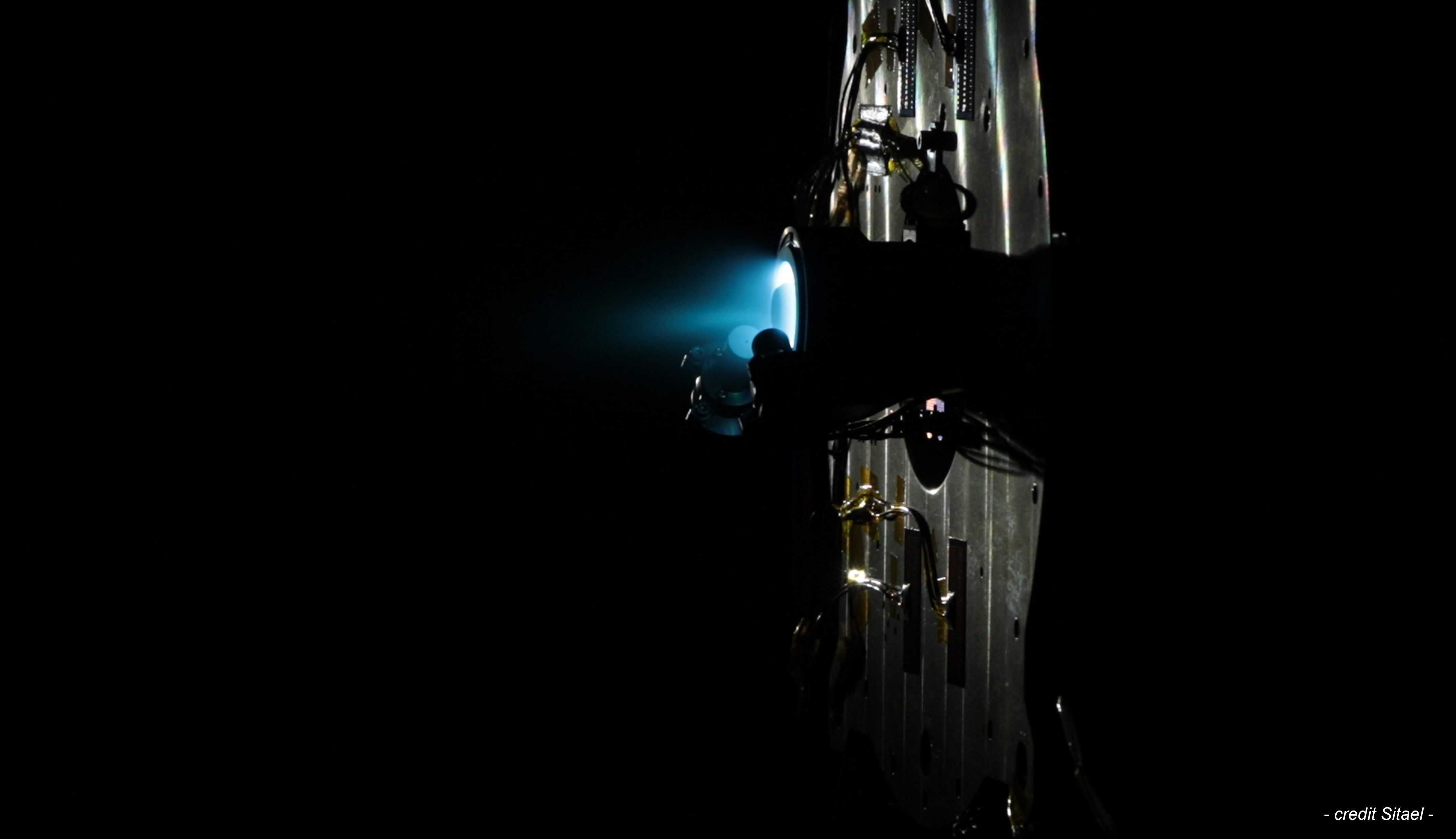On December 1st 2023 at 7:19 PM (Italian time) the first all-electric small satellite “MicroHETSat” by Sitael lifted off from California on board SpaceX Falcon-9 mission.
MicroHETsat (or µHETsat) is a satellite developed at SITAEL S.p.A. in collaboration with the European Space Agency (ESA) and the Italian Space Agency (ASI). It represents one of the first applications of a Hall Effect based, low power electric thruster (so-called HET), on-board a microsatellite platform (µsat).
Planetek Italia developed the Mission Control Software based on Ermes, a modular, flexible and interoperable software addressing Mission Operations
activities for S/C Platforms and Payloads.
 Developed by Sitael in Italy, the HT100 low power electric propulsion system is centered on a small size and low power Hall Effect Thruster, capable of boosting up to 6 millinewtons of thrust by accelerating ionised propellant particles through a magnetic field. Due to their high efficiency, Hall Effect Thrusters are in widespread use aboard geostationary and low-Earth orbit satellites for orbit maintenance purposes, increasing mission lifetimes, and enabling formation flying for constellations.
Developed by Sitael in Italy, the HT100 low power electric propulsion system is centered on a small size and low power Hall Effect Thruster, capable of boosting up to 6 millinewtons of thrust by accelerating ionised propellant particles through a magnetic field. Due to their high efficiency, Hall Effect Thrusters are in widespread use aboard geostationary and low-Earth orbit satellites for orbit maintenance purposes, increasing mission lifetimes, and enabling formation flying for constellations.
The approximately 70 kg µHETSat satellite used for this in-orbit demonstration– whose platform, also fully developed by Sitael, is an upgraded and rugged version of the one previously used for the ESA’s European Student Earth Orbiter mission – will have the thruster raise and lower its orbit in a series of dedicated tests and in-orbit functional and performance verification campaigns over a planned two-year lifespan. Starting from an initial 550 km altitude orbit, the goal is to achieve at least 1 000 ignition cycles and a single ignition to surpass 600 seconds.
The mission is being supported through the Fly element of ESA’s General Support Technology Programme, aimed at giving early in-orbit demonstration opportunities to promising new European technologies.
Thanks to its plasma engine, MicroHETSat allows, with reduced consumption, maneuvers that were previously unthinkable for small satellites, avoiding collision risks and mitigating the problem of orbital debris, with important implications for sustainability in space activities.
Video: MicroHETSat launch and in orbit deployment by SpaceX






